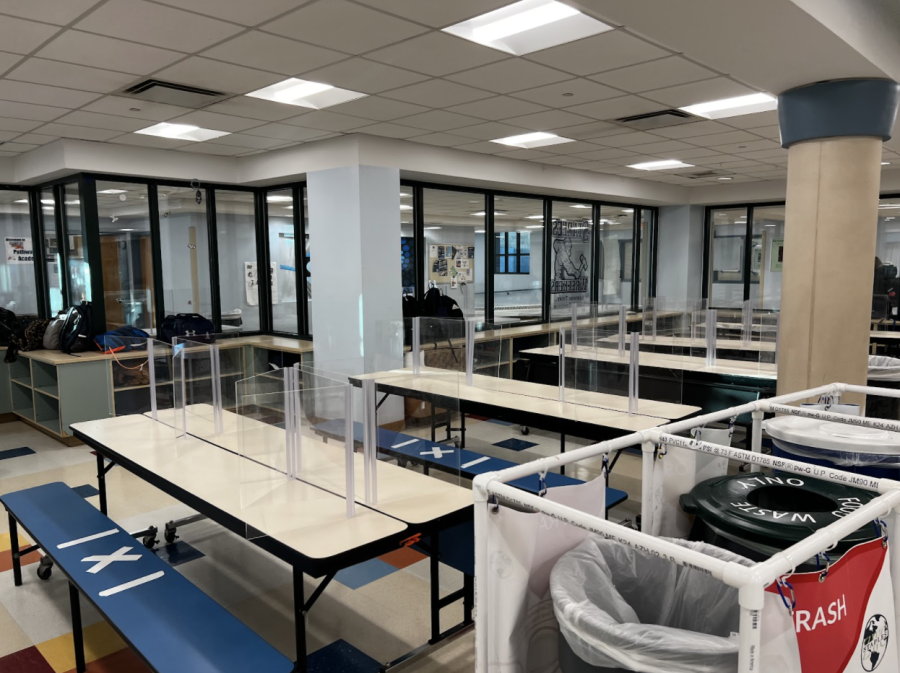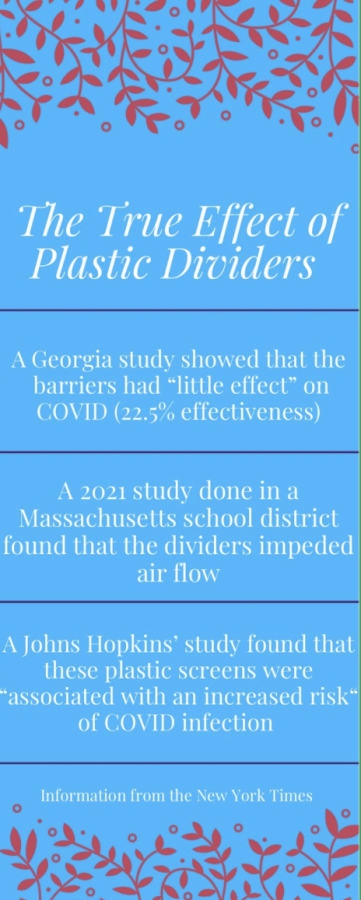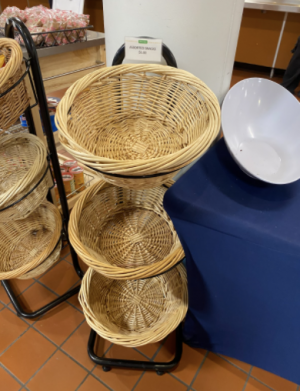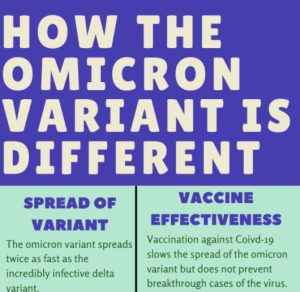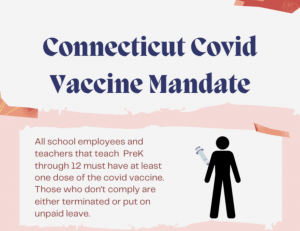Students oppose further plastic divider use
The plastic dividers at lunch: you may or may not know them because it is likely that someone has already tossed them under the table. They were first introduced last year, at the peak of the COVID-19 pandemic, and were reintroduced due to the recent Omicron-related spike.
However, last time around they were at least somewhat respected by students and not taken down with reckless abandonment. This time, it is more common to see them down rather than up.
“I definitely think that a bunch of dividers are being taken down by students,” Olivia McCaffrey ’23 said. “I think that students have become accustomed to not having them on the tables anymore and don’t take them seriously now that they are back up. People likely see them as more of a burden than a safety protocol.”
Srushti Karve ’23 explains other reasons why students are taking the dividers down.
“They also make it hard to communicate, and so instead of making students stay in their places, the dividers force them to just move more,” Karve said.
Beyond students taking them down, according to an article in the New York Times, there is a concern that they may provide a false sense of security.
“Erecting plastic barriers can change air flow in a room, disrupt normal ventilation and create ‘dead zones,’ where viral aerosol particles can build up and become highly concentrated,” Tara Parker-Pope, the writer of the article, wrote.
The article also mentions several studies, including one conducted by Johns Hopkins last summer which showed that these plexiglass screens “were associated with an increased risk of coronavirus infection.”
Some students, in contrast to the Times article, believe the idea of dividers could be potentially helpful.
“I [do] think anything that is practical and actually helps get rid of COVID should be used,” Brenner Dick ’23 said. “The sooner [COVID is] gone, the better.”
.”

Executive TV Producer Finnegan Courtney ’23 oversees the creation of Inklings’s show, On the Wreckord. He dedicates much of his time to Inklings’s...












































